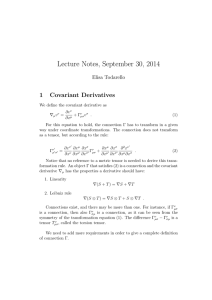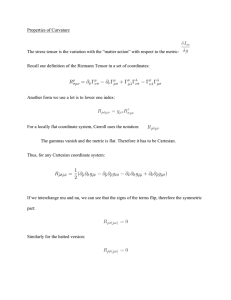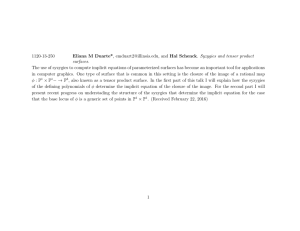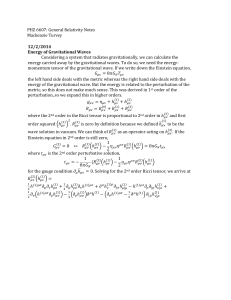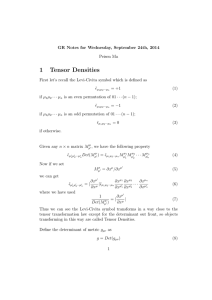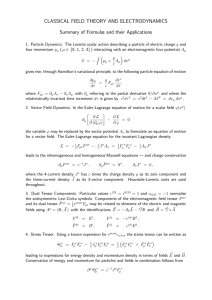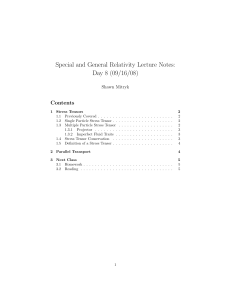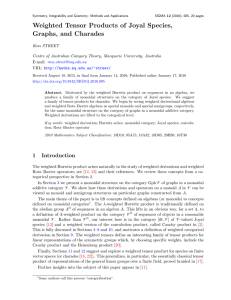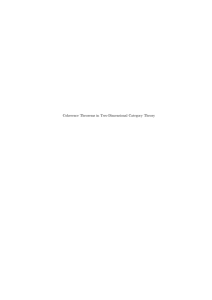Spring 2009, Course 18.769: Tensor categories TR 11-12:30, Rm. 4-163
advertisement
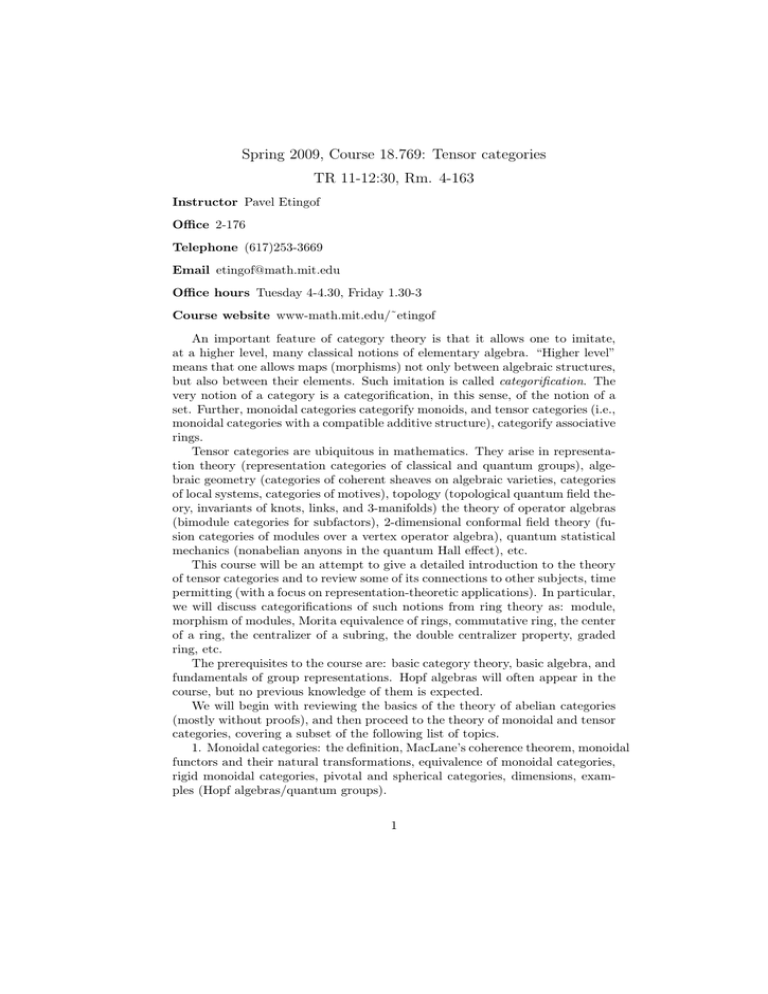
Spring 2009, Course 18.769: Tensor categories TR 11-12:30, Rm. 4-163 Instructor Pavel Etingof Office 2-176 Telephone (617)253-3669 Email etingof@math.mit.edu Office hours Tuesday 4-4.30, Friday 1.30-3 Course website www-math.mit.edu/˜etingof An important feature of category theory is that it allows one to imitate, at a higher level, many classical notions of elementary algebra. “Higher level” means that one allows maps (morphisms) not only between algebraic structures, but also between their elements. Such imitation is called categorification. The very notion of a category is a categorification, in this sense, of the notion of a set. Further, monoidal categories categorify monoids, and tensor categories (i.e., monoidal categories with a compatible additive structure), categorify associative rings. Tensor categories are ubiquitous in mathematics. They arise in representation theory (representation categories of classical and quantum groups), algebraic geometry (categories of coherent sheaves on algebraic varieties, categories of local systems, categories of motives), topology (topological quantum field theory, invariants of knots, links, and 3-manifolds) the theory of operator algebras (bimodule categories for subfactors), 2-dimensional conformal field theory (fusion categories of modules over a vertex operator algebra), quantum statistical mechanics (nonabelian anyons in the quantum Hall effect), etc. This course will be an attempt to give a detailed introduction to the theory of tensor categories and to review some of its connections to other subjects, time permitting (with a focus on representation-theoretic applications). In particular, we will discuss categorifications of such notions from ring theory as: module, morphism of modules, Morita equivalence of rings, commutative ring, the center of a ring, the centralizer of a subring, the double centralizer property, graded ring, etc. The prerequisites to the course are: basic category theory, basic algebra, and fundamentals of group representations. Hopf algebras will often appear in the course, but no previous knowledge of them is expected. We will begin with reviewing the basics of the theory of abelian categories (mostly without proofs), and then proceed to the theory of monoidal and tensor categories, covering a subset of the following list of topics. 1. Monoidal categories: the definition, MacLane’s coherence theorem, monoidal functors and their natural transformations, equivalence of monoidal categories, rigid monoidal categories, pivotal and spherical categories, dimensions, examples (Hopf algebras/quantum groups). 1 2. Tensor categories: Grothendieck rings, fiber functors and reconstruction theory for Hopf algebras, Gradings on tensor categories, equivariantization. 3. Tensor categories with finitely many simple objects, Frobenius-Perron dimensions, fusion categories, examples. 4. Module categories: the definition, examples, properties, algebras in categories, categories of module functors, dual categories. Morita equivalence of tensor categories. 5. Braided tensor categories: definition, ribbon and modular categories, the Verlinde formula, the Andersen-Moore-Vafa theorem, the divisibility theorem, the Drinfeld center construction, the class equation for spherical fusion categories, the Müger centralizer and center. 6. Symmetric categories, Tannakian formalism, Deligne’s Theorem, symmetric categories of superexponential growth. 7. Radford’s formula for the fourth dual and its applications. 8. Squared norms and global dimensions: definition, positivity of squared norms. 9. Cohomology and deformation theory of tensor categories: the standard deformation complex of tensor categories and functors, Ocneanu rigidity. 10. Frobenius-Perron dimension in fusion categories: basic properties, comparison of global and FP dimension, pseudounitary categories, fusion categories with integer FP dimension, classification of fusion categories of a given integer dimension. 11. Lifting theory for fusion categories (from characteristic p to characteristic zero). 12. Module categories over the representation category of Uq (sl2 ), graphs, and quivers. 14. Tensor categories and vertex algebras. 15. Tensor categories and knot invariants. Some sources: 1. B. Bakalov, and A. Kirillov Jr., Lectures on tensor categories and the modular functor, http://www.math.sunysb.edu/ kirillov/tensor/tensor.html 2. D. Calaque, P. Etingof, Lectures on tensor categories, arXiv:math/0401246. For students who have not passed the qualifying examination, to pass the course, it will be required to solve homework assignments which will be assigned every other Thursday for two weeks. It is ok to collaborate on homework if you creatively participate in solving it and understand what you write. 2


